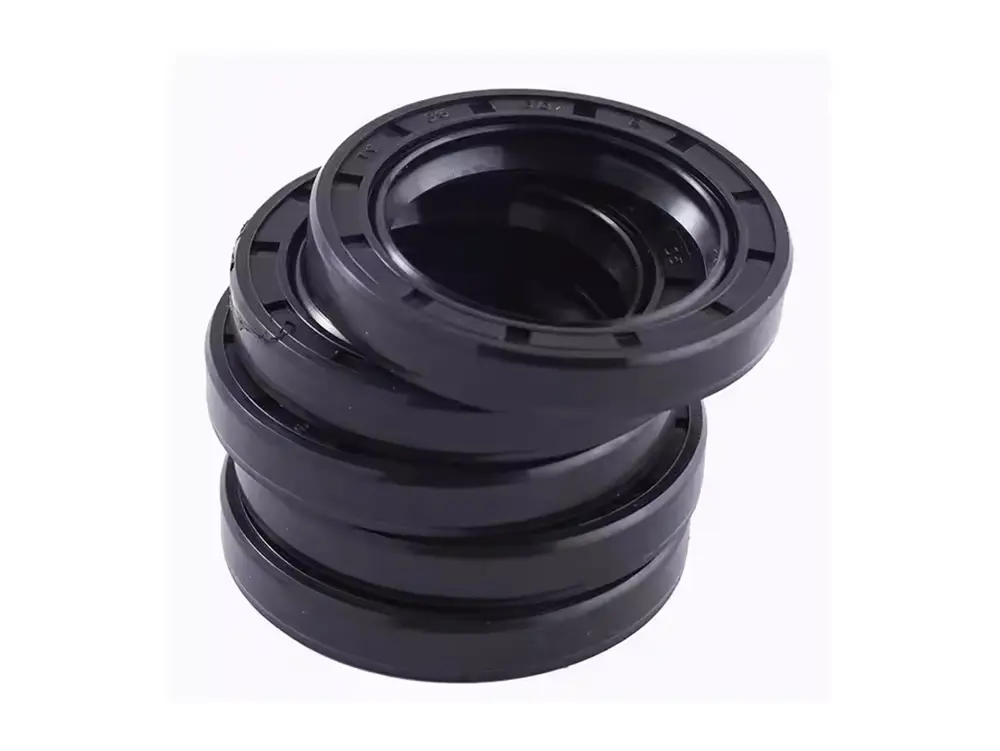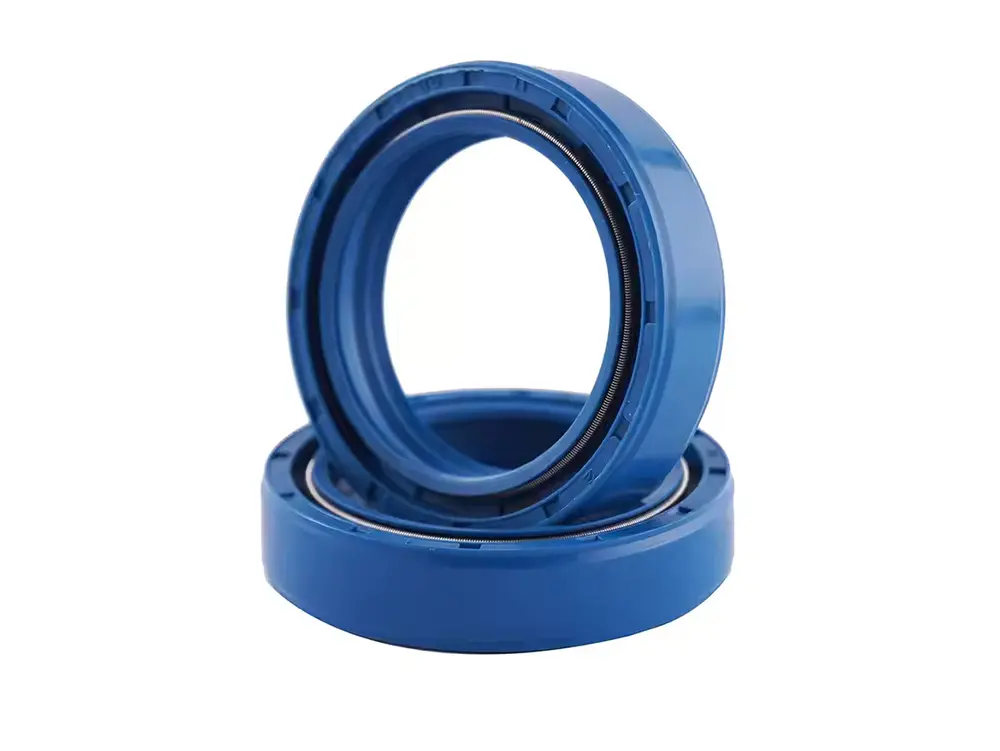Industrial Machinery Oil seal Any Color Customizable TC NBR/FKM
Product parameter
|
Material |
Hardness |
Temperature |
Property |
|
SIL/VMQ |
50A |
Extreme temperature -60℃-250℃ |
High and low temperature resistant Commonly used in food grade FDA |
|
NBR |
Standard 70A Customizable 40A-90A |
Extreme temperature -40°C-120°C |
Oil and wear resistant |
|
FKM/VITON |
Standard 70A Customizable 50A-90A |
Extreme temperature -40°C-240°C |
High temperature resistance, oil resistance, chemical resistance |
|
EPDM |
Standard 70A Customizable 40A-90A |
Extreme temperature -40°C-150°C |
Strong acid and alkali resistant, 150° water vapor resistant Aging resistant, ozone resistant High temperature resistant, low temperature resistant Commonly used in food grade FDA |
|
HNBR |
Standard 70A Customizable 40A-90A |
Extreme temperature -40°C-120°C |
Wear-resistant, oil-resistant, refrigerant-resistant (air conditioning) Resistant to polar solvents, good deformation resistance |
|
CR |
Standard 70A Customizable 40A-90A |
Extreme temperature -40°C-120°C |
Ozone resistance, weather resistance Chemical resistance, aging resistance |
|
FVMQ |
Standard 70A Customizable 45A-70A |
Extreme temperature -60°C-177°C In dry environment, high temperature resistance can reach 232°C |
Oil resistance, acid and alkali resistance, heat resistance Cold resistance, high voltage resistance Atmospheric aging resistance, resistance to solvents |
|
FFKM |
Standard 70A Customizable 50A-90A |
Normally around 250°C Special formula can reach around 320°C-330°C |
Excellent performance Can be used in almost all harsh environments Has the same advantages as PTFE in high temperature resistance Chemical resistance, corrosion resistance, resistance to various solvents and elasticity as rubber |
|
PU |
Standard 70A Customizable 60A-90A |
Extreme temperature -40°C-90°C |
Wear-resistant, high pressure-resistant, aging-resistant, and hydrolysis-resistant |
Brief introduction
Oil seal is a common name for general seals, which simply means the seal of lubricating oil. It is a mechanical component used to seal grease (oil is the most common liquid substance in the transmission system, and also refers to general liquid substances). It isolates the parts that need lubrication from the output parts in the transmission parts to prevent the lubricating oil from leaking. The seals used for static seals and dynamic seals (generally reciprocating motion) are called oil seals.
| place of origin | Shandong,China |
| model number | Standard Oil Seal |
| Standard or Nonstandard | Standard/Customized |
| Colour | Any color is OK |
| Material Type | NBR,EPDM,SILICONE,FKM,SBR,NR,etc. |
| Size | from 4mm to 1000mm size |
| Hardness Range | 20-90 Shore A |
| Application | For all industries |
| OEM/ODM | Available |
| Certificate | IATF16949/ISO9001/ISO14001 |
| Package | pp bag/carton |
| Single package size | 10X10X10 cm |
| Single gross weight | 0.010 kg |
Seal ring category
● V-ring: Axially acting elastic rubber sealing ring, used as a pressure-free seal for rotating shafts, which can compensate for large tolerances and angular deviations.
● U-ring: Commonly used for reciprocating seals in hydraulic systems and widely used for sealing hydraulic cylinders in engineering machinery.
● O-rings: Mainly used for static sealing and reciprocating motion sealing. When used for rotary motion sealing, it is limited to low-speed rotary sealing devices.
● Rectangular sealing ring: Generally installed in a groove with a rectangular cross-section on the outer circle or inner circle to perform a sealing function.
● Y-type sealing ring: widely used in reciprocating sealing devices.
● Z-Spring tension (spring energy storage) seal: A spring is added to the PTFE sealing material. There are O-type springs, V-type springs, U-type springs, etc. They can adapt to a wide temperature range and seal various liquids, chemicals and gases.
● YX type sealing ring for holes: used for sealing the piston in reciprocating hydraulic cylinders, made of polyurethane TPU, CPU, rubber, etc.
● YX-type seal ring for shaft: used to seal the piston rod in reciprocating hydraulic cylinders. The material is similar to the YX-type seal ring for holes.
The parameters of O-rings mainly include the following aspects
● Dimensional parameters: Inner diameter: refers to the diameter of the inner hole of the O-ring. For example, the 7.5 in the O-ring 7.5×1.8-g-n represents an inner diameter of 7.5 mm.
● Cross-section diameter: also known as wire diameter, which is the diameter of the circular cross-section of the O-ring. For example, the 1.8 in the above model indicates that the cross-section diameter of the rubber ring is 1.8 mm. This parameter has an important influence on the sealing performance and installation groove size of the O-ring. Commonly used cross-section diameters are 1.8mm, 2.65mm, 3.55mm (according to the new national standard GB/T 3452.1), etc.
● Groove size: including groove inner diameter, groove outer diameter, depth and width, etc. The groove size must match the inner diameter and cross-section diameter of the O-ring to ensure the sealing effect and stability of the O-ring after installation.
Performance parameters
● Working pressure: The pressure range that an O-ring can withstand is generally 0-300MPa. The greater the working pressure, the required O-ring cross-sectional diameter may also need to be increased accordingly to ensure sufficient sealing force.
● Working temperature: The temperature range in which the O-ring is applicable. The working temperature range of O-rings made of different materials is different. For example, the general operating temperature range of nitrile rubber is -25℃~150℃, and fluororubber can work in an environment of -20℃~250℃.
● Working speed: The movement speed limit of the O-ring in dynamic applications is generally ≤15m/s.
Applicable media
The types of media that the O-ring can seal, such as hydraulic oil, gas, water, mud, crude oil, emulsion, water-ethylene glycol, acid, etc.
In addition, there are some other technical requirements for O-rings, such as appearance requirements in accordance with GB/T 3452.2-2007, material requirements in accordance with HG/T 2579-2008, etc.
description2




